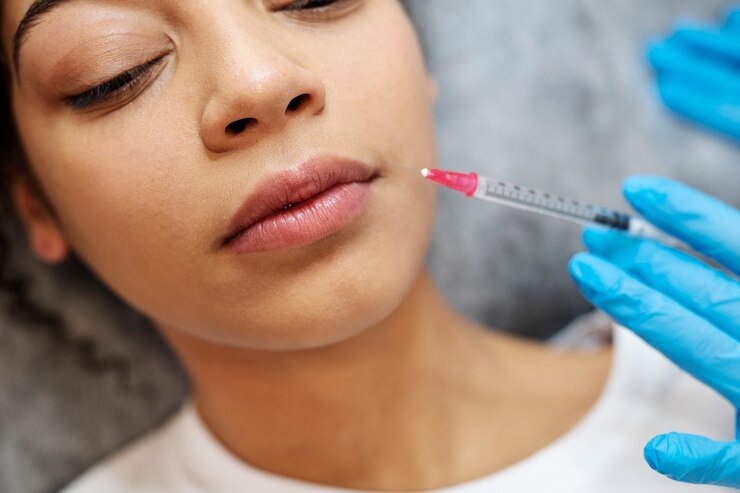Lip fillers have become a popular cosmetic procedure, with many individuals seeking fuller, plumper lips. However, with the rise in demand for lip enhancement, concerns about potential side effects and long-term damage have also increased. One of the most common questions people ask is whether lip fillers can cause permanent damage to the lips. To answer this, it’s essential to understand how lip fillers work, the potential risks involved, and the likelihood of permanent damage.
What Are Lip Fillers?
Lip fillers are injectable substances that are used to add volume, smooth lines, and enhance the shape of the lips. The most common type of filler is made from hyaluronic acid, a naturally occurring substance in the body that attracts moisture and promotes a plump appearance. There are also other types of dermal fillers, such as collagen-based fillers, although hyaluronic acid is the most widely used due to its temporary nature and minimal risk of adverse reactions.
The procedure typically takes around 15 to 30 minutes and is minimally invasive. Results are immediate, and the effects usually last for six months to a year, depending on the type of filler used and the individual’s metabolism.
How Do Lip Fillers Work?
When injected into the lips, fillers temporarily plump up the tissue, providing a fuller, more youthful look. The filler is carefully placed to ensure a natural-looking result. In addition to adding volume, lip fillers can also address fine lines around the mouth, such as “smoker’s lines” or “lipstick lines.”
While the procedure is generally safe and well-tolerated, the results are not permanent, as the body gradually absorbs the filler over time. This means that repeat treatments are necessary to maintain the desired appearance.
Can Lip Fillers Cause Permanent Damage?
In most cases, lip fillers do not cause permanent damage to the lips. However, like any cosmetic procedure, there are risks involved, and improper application or care can lead to complications. Below are some potential issues that could cause harm to the lips:
1. Infection
Infections are one of the most common risks associated with lip fillers. If the area is not properly sanitized before the procedure, or if aftercare instructions are not followed, bacteria can enter the skin, leading to an infection. In severe cases, an infection can cause tissue damage, scarring, and potentially permanent alterations to the lip’s appearance.
2. Lumps and Bumps
If the filler is not evenly distributed, it can result in lumps or bumps beneath the skin. While these are usually temporary and can be massaged out by a professional, in rare cases, they may become permanent. This can occur if the filler is injected too deeply or if the filler material migrates after injection.
3. Tissue Damage
In some instances, excessive or poorly executed injections may lead to tissue damage. This could cause swelling, bruising, or even necrosis (death of tissue) in extreme cases. Tissue damage can result in permanent scarring or a change in the texture of the lips. This is why it’s essential to choose an experienced, qualified injector who understands facial anatomy and can deliver precise injections.
4. Allergic Reactions
Although rare, some individuals may experience an allergic reaction to the filler material. Symptoms may include swelling, redness, or itching, which, if left untreated, could cause long-term issues. It’s important to perform a patch test before the procedure to ensure that you are not allergic to the filler.
5. Overfilling
Overfilling, or injecting too much filler into the lips, can result in an unnatural or disproportionate look. In extreme cases, overfilled lips may stretch or cause the tissue to become permanently altered, especially if repeated treatments are done over time without allowing the lips to return to their natural state. It’s crucial to communicate clearly with your injector about your desired outcome and avoid seeking excessively large lips that could cause long-term issues.
How to Minimize the Risk of Permanent Damage
While the risks of permanent damage are relatively low, there are several steps you can take to minimize the chance of complications:
- Choose an Experienced Injector: One of the most important factors in achieving safe and effective results is selecting a qualified, experienced practitioner. Make sure they have a solid track record and proper certifications.
- Follow Aftercare Instructions: After the procedure, follow all aftercare instructions provided by your injector to reduce the risk of infection and complications. This may include avoiding touching the lips, applying ice to reduce swelling, and steering clear of makeup for a short period.
- Be Realistic About Expectations: It’s important to have realistic expectations and avoid the temptation of overfilling. A modest enhancement can achieve a natural, beautiful result without risking permanent damage.
- Know Your Body: If you have any allergies or a history of skin reactions, discuss this with your injector beforehand to ensure that the chosen filler is safe for you.
Conclusion
In general, lip fillers do not cause permanent damage to the lips, but like any cosmetic procedure, they come with risks. Complications such as infection, lumps, and tissue damage can occur, especially if the procedure is performed improperly or aftercare instructions are not followed. Choosing a qualified injector and adhering to safety guidelines can significantly reduce the chances of experiencing permanent damage. If you’re considering lip fillers, it’s important to weigh the benefits against the potential risks and to make an informed decision with the help of a trusted professional. learn more here – https://www.optimisemedical.co.uk/dermal-fillers/lip-filler/



